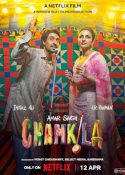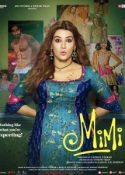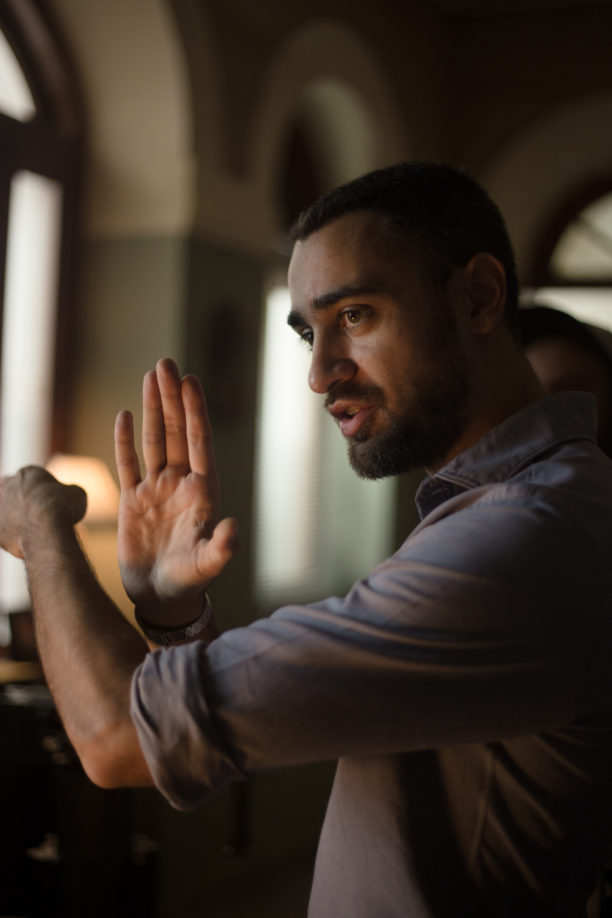
Three years ago, Imran Khan, made the conscious decision to step away from film because acting was no longer his passion. Now, many may not know that Imran actually studied at New York Film Academy in Los Angeles for directing and screenwriting. So, he now has a new film path – sitting in the director’s chair – and he says he has definitively found what he wants to do.
His first endeavor is a short film on India’s successful mission to orbit Mars. On 24 September 2014, India made history when their rover Mangalyaan began successfully orbiting Mars, marking the country’s first venture into interplanetary space. Although the film titled Mission Mars is short, it takes an immersive look into the people, the plan, and the success of this spectacular mission.
Mission Mars is a must see full of tension, humor, information and brilliance in directing, acting…everything that makes a film good. Be sure to check it out!
I have been talking with Imran since Jaane Tu… Ya Jaane Na 10 years ago and since then we talked about many of his movies. I have always written in my articles that Imran Khan is one of my absolute favorite people to interview. Our interviews always turn into really wonderful, in-depth conversations, and once again that happened. Please indulge us and read this extensive conversation on Imran’s new direction. (Pun intended!)
How did the project come together?
I was actually wanting to make a short film and was tossing some ideas around. Then, probably around October of last year, I was out for dinner with Punit [Malhotra] and I was telling him, you know, I am thinking that I would like to make a short film. Dip my toes into the pool; get a little bit of experience behind the camera. He asks me if I’d be interested in making a film on the Mars mission. My ears kind of perked up because I had been following the mission back in 2013. I said, ’Yes, I would love to do that. What’s the deal? What’s going on?’
See, Punit is heading up Dharma 2.0, which is Dharma’s advertising, commercial division. Johnny Walker came to them with the concept of making a short film on India’s Mars mission. They had a kind of a script, they wanted to attach a director to it, and they wanted Dharma to produce it. Punit was trying to put the project together. I jumped up and said, ‘Look, I would love to do that because I think we don’t really do Sci-Fi films in India and the 2 or 3 times we’ve tried to do it, it is not very well done. It just looks bad.’ I remember telling Punit during that meeting, ‘You know what, if someone else makes this film, the guys in the control room are going to use Microsoft PowerPoint or Excel to control the rockets, because nobody is going to care about those little details. I want to do this. I have to do this because I am the right guy for this.’
I jumped in with both hands and started in on the research and told them about the concept I wanted to do, the kind of approach I wanted to take with it. I want to write the script. I will pitch it to you and if you like that let’s make that.
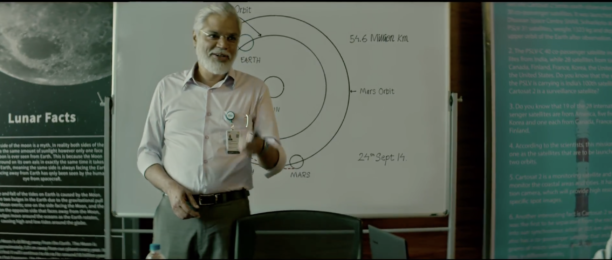
What sort of preparation and research did you do to make this story come to life?
I wanted to be as authentic and as realistic as possible, so it started with a whole bunch of research. I co-wrote the script with a friend of mine, Abhishek Saha, who acted in the film. He plays Srikant, the junior engineer. He is another Sci-Fi geek like me. So, the first thing we did was to sit down and learn everything that we could about this mission. There is a very good book called Reaching for the Stars written by Pallav Bagla and Subhadra Menon, which kind of outlines the entire mission, all the details. That became our bible. There is also a great 45-minute documentary on Netflix, which again gives you a broad outline of the mission, all the dates and details, all the main characters and all that. We watched every interview we could find. All of the back news coverage from over the 2 years they were launching and traveling to Mars. From all of that, we pieced together the timeline of the mission: how it was green lit, how they went about planning, designing, what all the steps and hurdles were – right up to the point that they reach Mars.
Tell us about writing the script and telling a story of a real life event.
Once we had the entire timeline of the mission and we had all the main characters, then we could pick our narrative stuff out of that. You see the film is set in the control room during those final 25 minutes when the craft is arriving and orbiting Mars. We managed to pluck that structure out because I understood the entire mission. We were also looking at it and saying, ‘Okay, this is a huge, huge mission and in the planning for 2 years. How do you tell that story in 20 minutes?’ If you tell it in a traditional linear narrative, you are not going to get the entire plot across. It is fortunate that that is how it played out – that on the day that they arrived at Mars, the craft goes behind Mars for 25 minutes and everyone in the control room is sitting there tensed… where it is out of their hands. That gave us a cool narrative. We set the film in that period and then showed flashbacks to show how we got here.

That really did keep up the tension of the movie because you did go back and forth. It actually was one of my favorite parts that you were always waiting to see what was going to happen and you were getting information while you were waiting.
You had a lot of comedy in there, as well as little nerd jokes which I loved ….
This is kind of something that I learnt and picked up from the films that I’ve loved while growing up. It is something that the old school, big budget filmmakers used to do, you know guys like Spielberg. Where even if you’ve got a moment or a sequence of great tension and drama, you still splice in a little bit of a moment of humour just too kind of alleviate the tension. It’s not actual comedy; it is just a little bit so that it’s not intense tension, tension, tension. That can get tiring and monotonous. When you are tense you need just a little bit of a giggle in between before you can go back into being tense. So it’s moments like in Raiders of the Lost Ark…you know that famous moment where Indiana Jones is facing this huge, burly guy that is swinging his sword around who does this fantastic martial arts display and Indy pulls out a gun and shoots him. It is just that one little moment of humour that makes you go hahahaha and then you get back into the action and tension. It is a classic technique.
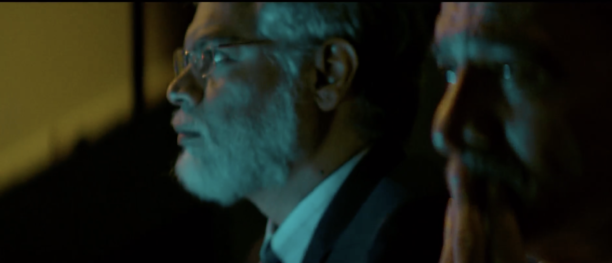
Jokes like the Einstein one…
Right from the get go there was a joke about relativity that I put that in and you know immediately after that joke, the younger character Srikant rolls his eyes and walks off. I put that in because I figured that would be the audience reaction when people heard that joke. I am putting this joke in for myself and the audience is probably going to react like this – roll their eyes and walk off.
A Personal Favorite… The Cake Guy
I was just talking to Avantika about that. Nobody got the cake guy at the conceptual level, at the script level. When I was casting him and explaining how it would be played out none of my team got it. It’s like ‘what is this cake guy, what’s he doing, why is he there, I don’t get it, what’s the deal?’ Only once when we had sliced it into the edits and everyone was like ‘Aah ok’. That’s what it is.
Easter Eggs
There is actually a whole bunch of easter eggs in the film. There are all these little touches I wanted to put in.
The Rubik’s Cube was an inside touch. Saha, who plays Srikant, is actually a Rubik’s Cube fanatic and he collects different variations of them. He was always playing with it when we were writing it so I said okay let’s use that in the film.
Also, somewhere in the middle of the film there is a sequence where Radhakrishnan tells the team, ‘We are on final approach, system set please’ and there is a series of quick shots with all of the technicians saying CRS standing by, FTT standing by… that sequence is a direct homage to Star Wars Episode 4 The New Hope. Just when they are going into the final run on the Death Star, the wing leader calls in and says all wings report in… and there is the sequence, Gold leader standing by etc. so that entire sequence is entirely taken from there. Also, as the sequence starts we are panning across a character and he actually has, right on the top of his desk, a R2-D2 figurine. That was tremendous.

Plus, behind cake guy, there is a huge chalk board which has this math equation written on it…the equation is actually the one from Interstellar that Michael Cain was trying to solve. We solved the equation and the solution was 42 from Hitchhiker’s Guide.
That is so cool!
You have probably seen a little bit of Star Trek right? You notice on Star Trek, on the bridge, the captain sits on a slightly elevated platform and the rest of the staff is kind of laid out in front of him. Over here in the control room Radhakrishnan sits on an elevated platform, a slightly curved console and everyone again is laid out in front of him. So the layout, the style of it is all slightly reminiscent of Star Trek.
I sprinkled these little references in everywhere. There is a lot of Star Wars, Star Trek, Interstellar, Hitchhiker’s Guide – all my favorite Sci-Fi stuff.
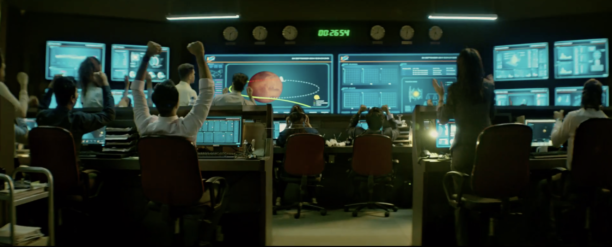
You said that you wanted to make the film seem really real.
Realistic, but not real. There is a slight difference there. If you actually take a look at the ISRO (Indian Space Research Organization) headquarters, the control room it does not look very good. I mean aesthetically. Their technology, their software, their hardware, it is all absolutely state of the art. It has to be for what they are doing, but it doesn’t look cool. I wanted this film to have an aspirational touch to it. I wanted people to watch it and think of these scientists as cool. I wanted people to look at the work they are doing and say that is cool. I want to do that, which is why the control room is a little bit more stylized. You may have noticed the keyboards are kind of flashy – they have these brightly colored lights in them. They are actually gaming keyboards. Technically they wouldn’t be using those to control satellites (laughs) but really aesthetically it looks cool. I wanted a little flair of Sci-Fi to it.
So there are all these little elements put in with the intention of making it slightly cooler, slightly slicker. Like I said, I want people to watch it and say that is cool. Indian scientists are cool.
I wanted, in my own small way, to tell a story in my voice. To kind of say, I feel that we can tell Indian stories in this way, with an aesthetic that looks slick and cool and sharp. Not aping Hollywood. See we kind of stumbled on that in Bollywood. We started to make things that look like Hollywood – kind of copying stuff and referencing from there but without actually taking the relevant learning away. So everyone is wearing cool clothes, let’s put them in cool clothes. They shoot in New York, let’s shoot in New York, just make it look like an American Rom-com. Rather I wanted to say, let’s take that aesthetic, let’s take that style and still tell an Indian story. I mean my characters speak in English. They are wearing suits, I was very finicky on the detailing there I might add. I was telling the stylist, the boss is super, super pristine. I wanted Radhakrishnan to look like he doesn’t sweat, even if the wind blows his hair doesn’t get out of place, this guy is just un-wrinkable, unbreakable, which is not super realistic but it was his character and so I can’t help it. I liked it. So yeah, to tell a story in that way, the way you would like Apollo 13 or The Post – one of those films.

Seems like a strange question but is making a short film like making a long film, only shorter?
Yes, because this film took 11 months to make – from the first meeting that I had, just sitting down writing, getting all that done and then pre-production. There was actually only 4 days of shooting, but to make this film has taken 11 months. I think with that amount of pre-production, had we been making a feature, really the only thing that would have changed would have been the number of shooting days. So instead of 11 months, if it were a feature, it would have taken 16 months. So, not a whole lot longer.
This was absolutely made at the scale of a feature film. I cannot tell you the kind of team that I had surrounding me. My cinematographer Anuj Rakesh Dhawan, he shoots most of Hansal Mehta’s films and he just shot Abhishek Chaubey’s new film. he is a fantastic cinematographer. My production designer, that entire control room is a set built in a studio. It is fantastic! She did such a stellar job on this.
So the entire production of this film was on the scale of a feature film. We were joking while making it saying that this isn’t a short film it is a mini feature.
A director once told me that a film is really made in the edit, because you have all these different shots that you have that you finally put together in a film. Especially with this film, because you had the past and present, would you say that is true?
Well, yes and no. This film was a bit complicated in its plot and in its structure also because it was always set up in this way meaning, starting the film at the climax and then you are jumping back to a series of flashbacks to explain how we got here. It was complicated at a plotting level and actually what we were doing, funnily enough, is editing it on the screenplay level. Have you ever sat in on an edit or done one yourself where you have a timeline below and you are chopping bits and moving blocks around back and forth? So, we were doing that with cards on a white board where we had scenes and little bits of scenes and we were moving them back and forth. It was kind of like editing, but at a screenplay level to make sure it was absolutely fitting together just right. That being said, you don’t really know that it is going to work until you get it on the edit table. And once it is on the edit table, it is not as simple as just cutting the shots together in the sequence they are scripted. You do have to massage them into place just a little bit where maybe a tiny moment of a scene, which took place 2/3 the way through your shooting, you will end up showing later in another scene – someone’s reaction or something like that. These little tweaks that the editor brings in that isn’t strictly the way it is scripted, but it makes it all flow and makes it all fit together seamlessly. It really is a bit of both.
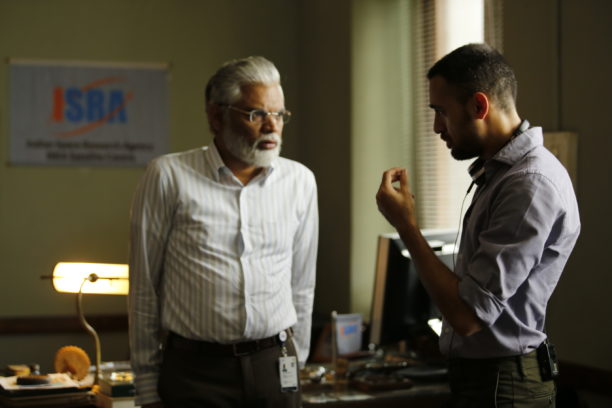
So, how was it to be a director?
You know, it was fantastic. You have been talking to me for years, since Jaane Tu, so you know that this is something that I have always had an interest in. It is something I always wanted to do.
It has been a tremendously significant experience for me personally, because in the last couple of years, since I consciously stopped acting there is a whole bunch of self-doubt that you start to have in the back of your own mind. Am I making the right choice? I spent a decade, literally 10 years of my life, building a career as a Bollywood star. That is not the sort of thing that people walk away from. Normally you are kicked out, kicking and screaming – trying desperately to cling on to you relevance… no, one more film, now I will start doing 2 hero films, now 3 hero films, now I am on Big Boss… you know. (Smiles). For me, it was very clear. I hit a moment where I said, ‘you know what I am just not motivated to do this. I don’t want to do this.’ I am not even taking scripts from people. Forget waiting for the right script, no, I am not even taking scripts from anyone – I don’t want to do that. I want to write my own script. I want to make my own content.
So, finally sitting down, writing my own content, shooting it, directing it, editing it and then putting it out there and seeing that it has been well received…that is tremendous. It does so much to help expel those self-doubts.
See, until you actually do it, you always have got this sense in your head that I am going to make a film and it is going to be cool and it is going to be like this and it is going to be like that. You know, everyone has that in their head, but you actually have to actually do it and look at it and say okay, now am I satisfied with it? Do I think I did a good job on this? For me, to actually make something by myself and look at it and say okay, yes I am happy with this. I am satisfied with what I have done… that makes me feel like I can do this.
Actually doing all of it myself, it’s kind of reaffirmed that notion in my mind that this is very definitively what I want to do. It excites me and it fulfills me in a way that acting never did.
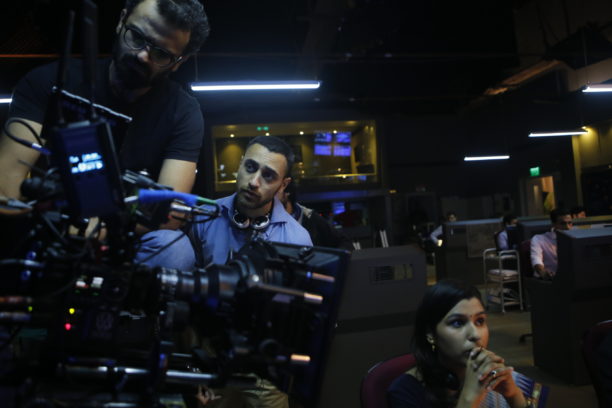
Your favorite part about making the film?
You know, funnily enough, it is the same thing as my favorite part about acting. It’s being on set. There is really nothing quite like that. The high of being on set and knowing that everyday that you have got X amount of time to get a certain amount of shots in the can. You are racing against whatever it is – daylight, weather, location permission, whatever it is, you are trying to get it all in the can. As an actor, I enjoyed that, but I still was only a smaller part of it. As a director, every single shot, everything that is happening on there comes down to me and I have to make sure it happens. So you’re very, very involved, you are very, very plugged in and if you happen to enjoy it the way I do, then there is nothing quite like it.
Did anything surprise you as a director? Was there any moment that you didn’t expect?
The biggest surprise was (laughs) the way you can make locations work. See while writing you have got something in your head… you imagine a room that has the door over here and there are windows over there and there is a certain view. And the guy is going to come in and stand in a certain way and because of the way he is standing you can’t see the window or whatever it is. You have written a scene imagining this kind of thing and now you are looking for a room that fits this one that you have imagined in your head and you can’t find it. It is not important or relevant enough scene that you can just build a set for that room, so you are going to have to start tweaking things around. Then you choose a location and 3 days before the shoot something goes wrong, for whatever reason, and you have to choose yet another location. These are literally things that happened to me while making this film. At the end of it, you end up shooting in whatever location it is…maybe you have to paint the wall, you put in a chair and a table the way you like it and shoot from a certain angle. And at the end of it it doesn’t make any difference at all. (Laughs) There were certain things that I had in my mind and I thought ‘Oh My God, this is never going to work! How can we do this? I can’t shoot here in this room! This is terrible.’ But then you look at it and it is fine! There is nothing wrong with it.
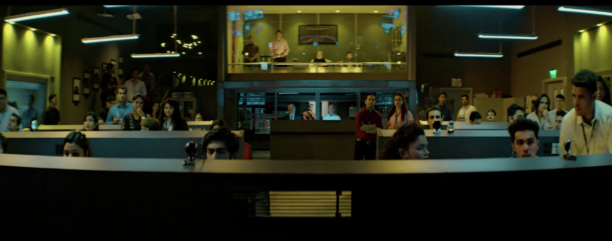
What are you proudest about in this film?
See what I was most afraid of for the film was that people would not understand the story because it is a technical story and there is a lot of technical information that you have to communicate in a very short amount of time. My concern was, one, I need to communicate all this to the viewer and two, I don’t want to dumb it down too much because this is a group of rocket scientists talking to each other. How much are they going to simplify their talk? They all know they have a certain amount of information and education. They are not going to be using absolutely stark immense terms to explain things to each other. So that was the challenge. How do you communicate all this information and concepts to the viewers without making it comically dumbed down? That’s tough. I think by in large I was able to do that.
I, and I know many audience members, would love to see this made into a full feature film…
You know, a lot of people have said that actually. I think from this format you can definitely expand it to a 2-hour movie. There is enough material there and the story is interesting and exciting enough that you can definitely have a 2-hour feature film based off of this. I don’t think I would do it because I have spent enough time with it and I feel like I have explored the story. There is nothing else new for me to say with it. I hope someone does, I think they could and I think they should make a feature film. But for me, no, I have put my mark on it and told the story my way.
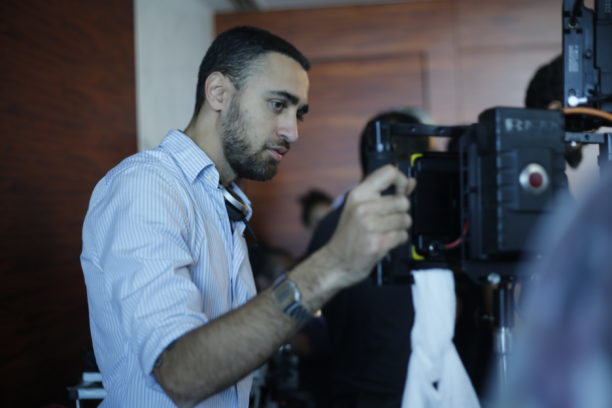
Do you know what you want to do next? Do you have another idea in your head?
I don’t know specifically what I want to make next, but I do know that I want to make something. I do know I want to direct soon. I know that I want to work in this style. Off the top of my head, I know I would like it to be in the digital space because of the creative liberties that it affords. That is all I know for sure! I absolutely know I want to do this and my first preference would be online.
The fact that this film was a digital short, it gave me the opportunity to make the film in English, which is the language in which I think. It allowed me to tell a pretty clear kind of story. A technical Sci-Fi, Sci-Tech story, which perhaps I wouldn’t have been able to tell if I were making a standard Bollywood film. I do know that I want to stretch myself in that way. I need more latitude.
The thing is when you are making a film for mainstream Bollywood consumption you start off with a certain set of constraints that have been put on you before hand. It has to be so long, it has to have so many songs in it, release on a Friday so on and so forth. It has to be in Hindi or the market is not going to watch it. You are told a lot of these things. As long as you are making a main stream Bollywood film, a lot of filmmakers feel like they are a little bit muzzled. Almost every filmmaker will admit to you that make some concessions because it was a Bollywood film. They are like well you know for the audience you need to do this. Every filmmaker will admit this to you. For me, I can’t start off with those constraints. And you know I feel like I didn’t have to do that. I didn’t have to make a single concession. I didn’t have to take a single compromise. I got to tell the story exactly the way I saw it. I got to make it in exactly the way I wanted. I got to tell exactly the kind of story I wanted – it’s about space exploration and a mission to Mars. At every level I got to do things my way. I got to really play around with it and express my voice. You have to be able to say I want to tell a story and what is the best way to tell that story?

Pan-India Cinema
I made the mistake of reading comments online, which I know you are not supposed to do, and there were a lot of stuff about… Why are they not speaking Hindi? Why is this film not in Hindi?
In the case of Mission Mars, Dr. Radhakrishnan, who over saw the project, Nandini Harinath and all of the people involved with the project, not one of these people speak Hindi. They speak Kannada, they speak Malayalam, they speak Tamil, and they speak English so English is actually the common language for these people. There is a certain school of people who say if you are telling a story about India shouldn’t it be in Hindi, but what about all of the Indian people who don’t speak Hindi? The film actually does have a couple of lines of Tamil and Kannada here and there. There are exclamations that the characters would use in their native language. Like you may have noticed one guy saying, ‘look at this guy what is up with him?’ That was in Tamil. See I had choice of doing that. If I was to make this exact same story within the Hindi film industry system I would have to make the film in Hindi. All of the characters would be speaking Hindi and anyone who actually worked on the project or familiar with it would look at it and say ‘why are all these characters speaking Hindi?’ But they say ‘ah, that is the Bollywood way.’
We have to start thinking of us as Indian content makers… not Bollywood, Tollywood or Kollywood. At this point there is cinema catering to every language and dialect in India. You have Punjabi cinema, Bhartiya cinema, Bengali cinema… it is huge. There are all of these regional cinemas and instead we really should be thinking of Pan-Indian cinema. We should be think about ourselves as Indian storytellers and if you tell a story that is set in North India – you tell it in the language of the place. If it is set in Punjab, the people speak Punjabi. And I am guilty of this myself; I made a film with Punit called Gori Tere Pyaar Mein, set in Bangalore, which was entirely, entirely in Hindi, not a word of Kannada in this…
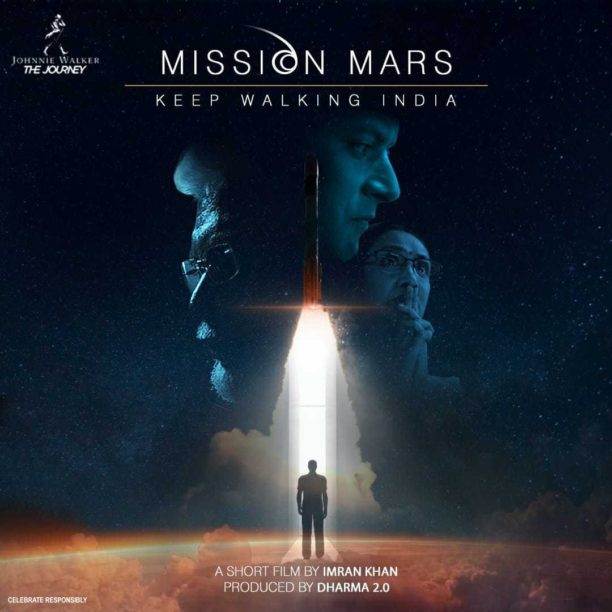
Mission Mars has gotten such a tremendous response…
That is what really feels fantastic because through my career as an actor I was always a part of a larger picture, which was being controlled by someone else, and very often I was not too happy with that. I ended up making a lot of films I wasn’t very satisfied with, that I wasn’t very proud of. I have made some films that have been successful that I personally was not very proud of – I didn’t think they were very good. So receiving praise for that, sometimes felt a little awkward because everyone is saying you are fantastic, it is a huge hit. But I didn’t think it was very good, you know? It didn’t have a great deal of value. It didn’t thrill me. Over here because I have made it exactly the way I wanted to. Exactly the way I saw it in my head, for better or worse, it is entirely mine. Then for that to be liked and for someone to say that’s good, that carries far more weight and it has far more value I think than anything that came before. I am tremendously happy.
What do you hope that audiences will take away from this film?
My primary interest was that people should know the story because I think it is a fantastic story. It is the kind of thing that if NASA had done something like this we would all know about it. Everyone on Earth would know about it, but it was done by ISRO. In fact, Mangalyaan is actually on our currency. It is on the 2000 rupee note and no one knows about it. Actually, while I was doing my initial run of interviews for this, I carried a 2000 rupee note with me and I would mention it to a journalist and they would say ‘what, really?’ I would pull it out to show them and say ‘here look at that, Mangalyaan is on the currency you use everyday.’ They would say, ‘Oh hey, I never noticed.’
So I really wanted this story to be known. I really wanted people to know about it, hear about it and people think it was cool – the way that I think it is cool.
I certainly thought it was cool and highly recommend that you watch Mission Mars! It also was uber cool to talk with Imran again and I would like to thank him for the amazing conversation. I look forward to our next chat!



